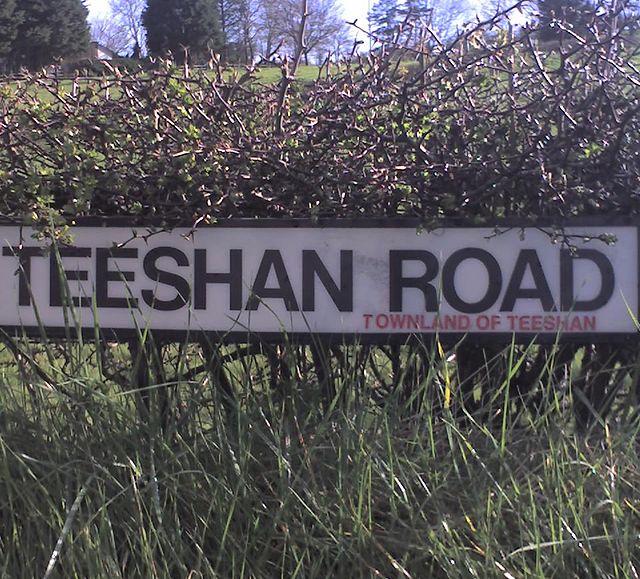A townland is a small geographical division of land, historically and currently used in Ireland and in the Western Isles in Scotland, typically covering 100–500 acres (40–202 ha). The townland system is of Gaelic origin, antedating the Norman invasion, and most have names of Irish origin. However, some townland names and boundaries come from Norman manors, plantation divisions, or later creations of the Ordnance Survey. The total number of inhabited townlands in Ireland was 60,679 in 1911. The total number recognised by the Irish Place Names database as of 2014 was 61,098, including uninhabited townlands, mainly small islands.
A road sign in County Antrim, Northern Ireland, notes that this part of the road lies within Teeshan townland.
A (rare) townland boundary marker in Inishowen, County Donegal
Townland sign in Irish for Baile na Coirce (Ballycuirke), Moycullen, County Galway, a Gaeltacht townland
A typical road-sign in County Tyrone, noting that this part of the road passes through the townland of Cavanreagh
Hundred (county division)
A hundred is an administrative division that is geographically part of a larger region. It was formerly used in England, Wales, some parts of the United States, Denmark, Southern Schleswig, Sweden, Finland, Norway, the Bishopric of Ösel–Wiek, Curonia, the Ukrainian state of the Cossack Hetmanate and in Cumberland County in the British Colony of New South Wales. It is still used in other places, including in Australia.
Medieval cantrefi of Wales





